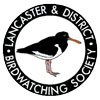Home › Forums › Discussions › Great Tit colour variation › Reply To: Great Tit colour variation
The yellow colour in feathers is made from a component in the birds’ diet called carotenoids. Carotenoids are a family of chemicals made by plants which tend to be pigmented – so they form the orange in carrots and the red in tomatoes and other fruits. For birds, these cannot be made by physiological processes and need to be taken in as part of the diet. The intensity of the yellow is determined by a couple of factors at the time when the bird moults in autumn – first, the level of carotenoids in their diet and secondly their ability to use the carotenoids. Carotenoids serve several functions, as well as adding colour to the feathers, which might increase the chances of getting a mate, they are also used in immune system function and, for females, are deposited in egg yolks, which increases offspring quality. These various trade-offs can affect the plumage colour intensity. For example, if a bird is ill or has a large parasite load at the time of moulting, it might use up the carotenoids to bolster the immune system in defence of its health, so the feathers emerge rather paler than they would on a healthy bird or a bird that has access to a high quality food source. Some of these effects are also likely to be associated with age and sex.
This is a big field of research because of the link between individual quality and the plumage signal/marker. So if you want to read more, a google search on ‘carotenoid bird plumage’ will throw up plenty of results. Work by Geoff Hill and Kevin McGraw has been particularly important.
Ian Hartley
